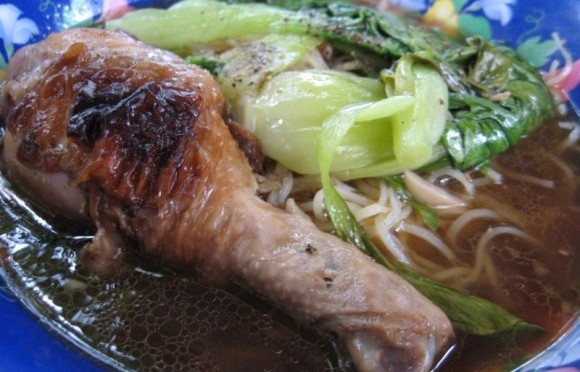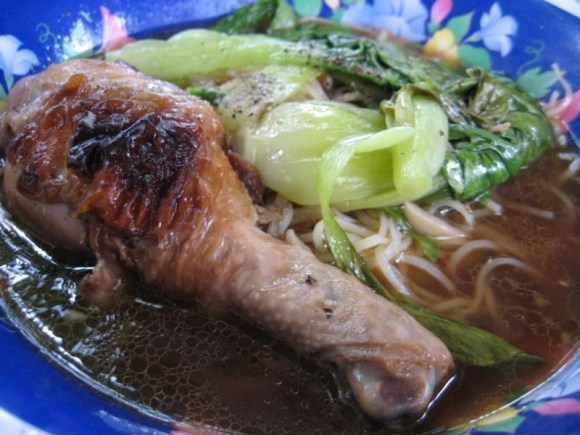Vietnamese Noodle Soup
Tag: Vietnam
Basa/Pangas
Panga is the common South African name for Pterogymnus laniarius, a small, ocean-dwelling fish, native to the southeast Atlantic Ocean and southwest Indian Ocean. Alternatively called “torpedo scads“, they are cold-blooded with white flesh. Their scales are generally pink in color with whitish underbelly and blue-green stripes running laterally along their sides.
Over the course of its life, a panga will undergo periodic sex-changes with as much as 30% of the population being hermaphroditic at a time. Despite the presence of both sex organs, it is thought unlikely that both are simultaneously active. Panga are slow to reach sexual maturity, with a minimum population doubling time of 4.5–14 years.
In other countries, the name panga may refer to a different species. In Indonesia, it refers to Megalaspis cordyla, in Spain, the Netherlands and Poland it refers to Pangasius hypophthalmus, and in Kenya it refers to Trichiurus lepturus.
Many are snatching up the fish at supermarkets as they are very cheap. The
fish looks good but read the article and you will be shocked. This product is
from Vietnam.
Do you eat this frozen fish called BASA? ( Pangasius, Vietnamese River Cobbler,
White Catfish, Gray Sole )
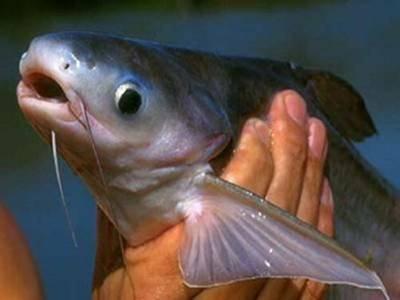
Industrially farmed in Vietnam along the Mekong River, BASA or Pangas or
whatever they’re calling it, has only been recently introduced to the French
market. However, in a very short amount of time, it has grown in popularity
in France. They are very, very affordable (cheap), are sold in filets with no
bones and they have a neutral flavor and texture; many would compare it to
cod and sole, only much cheaper. But as tasty as some people may find it,
there’s, in fact, something hugely unsavory about it. I hope the information
provided here will serve as very important information for you and your future
choices. Here’s why it is better left in the shops and not on your dinner
plates:
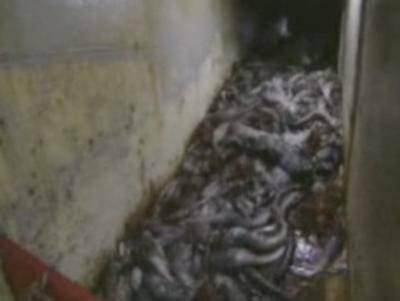
1. BASAS or Pangas are teeming with high levels of poisons and bacteria.
(industrial effluents, arsenic, and toxic and hazardous by-products of the
growing industrial sector, polychlorinated biphenyls (PCBs), DDT and its
metabolites (DDTs), metal contaminants, chlordane-related compounds
(CHLs), hexachlorocyclohexane isomers (HCHs), and hexachlorobenzene
(HCB) ).
The reason is that the Mekong River is one of the most polluted rivers on the
planet and this is where basa/pangas are farmed and industries along the
river dump chemicals and industrial waste directly into it. Avoid eating them
because they contain high amounts of contamination. Regardless of Reports
and recommendations against selling them, supermarkets still sell them,
knowing full well that they are contaminated.
2. They freeze Basa/Pangas in contaminated river water.
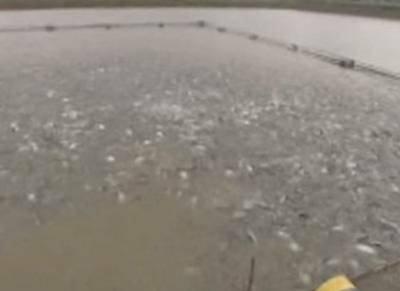
3. BASA/Pangas are raised in Vietnam .. Pangas are fed food that comes
from Peru ( more on that below ), their hormones ( which are injected into
the female Pangas ) come from China . ( More about that below ) and finally,
they are transported from Vietnam to other countries
4. There’s nothing natural about Basa/Pangas – They’re fed dead fish
remnants and bones, dried and ground into a flour (from South America),
manioc ( cassava ) and residue from soy and grains. This kind of nourishment
doesn’t even remotely resemble what they eat in nature. But what it does
resemble is the method of feeding mad cows ( cows were fed cows,
remember? ). What they feed basa/pangas is completely unregulated so
there are most likely other dangerous substances and hormones thrown into
the mix. The basa/pangas grow 4 times faster than in nature, so it makes
you wonder what exactly is in their food? Your guess is as good as mine.
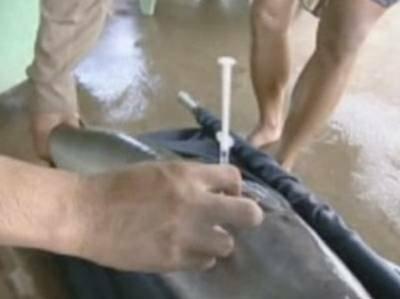
5. Basa/Pangas are injected with Hormones Derived from Urine. They inject
female Basa/Pangas with hormones made from the dehydrated urine of
pregnant women, the female Pangas grow much quicker and produce eggs
faster ( one Basa/Panga can lay approximately 500,000 eggs at one time ).
Essentially, they’re injecting fish with hormones ( they come all of the way
from a pharmaceutical company in China ) to speed up the process of growth
and reproduction. That isn’t good. And also consider the rest of the reasons
to NOT eat BASA.
6. You get what you pay for – and then some. Don’t be lured in by insanely
cheap price of Basa/Pangas. Is it worth risking your health and the health of
your family?
7. Buying Basa/Pangas supports unscrupulous, greedy corporations and food
conglomerates that don’t care about the health and well-being of human
beings. They are only concerned about selling as many basa/pangas as
possible to unsuspecting consumers. These corporations only care about
making more money at whatever cost to the public..
8. Basa/Pangas WILL make you sick – If you don’t get ill with vomiting,
diarrhea and effects from severe food poisoning, congratulations, you have
an iron stomach! But you’re still ingesting POISON not “Poisson”.
Final important note: Because of the prodigious amount of availability of
Basa/Pangas, be warned that they will certainly find their way into other
foods like imitation crab sticks, fish sticks, fish terrines, and probably in some
pet food too. Just check the Ingredient List to see if Basa is one of the
ingredients. Good Luck.
You have been warned !!!
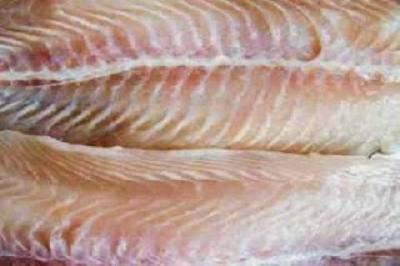
Why are we allowing this product to be imported?
the lunch lady
Every morning before the sun rises, Nguyen Thi Thanh rolls out of bed, dons a comfy do bo (Vietnamese pyjamas), hops on her motorbike and heads to Thi Nghe Market. Thanh has been frequenting the same vendors for years, so everyone knows her by name and provides her with the freshest meats, noodles, herbs and vegetables.
Thanh arrives home at 8 am and begins preparing the day’s noodle dish. All of her broths are made from scratch, and she is blessed with a certain touch that somehow allows her soup seasonings to simultaneously suit everyone’s tastes. An hour before noon, the broth is finally perfect, and a crowd of customers gathered under a shady tree near her apartment is ready to dig into a hot bowl of noodles. This well-worn routine has been a part of Thanh’s life for the past decade, and she wouldn’t have it any other way.
Despite recent dramatic increases in the costs of raw ingredients, Thanh refuses to raise her prices above 13,000 VND. She does not want to burden her customers, who are mostly local residents and workers. Instead, she compensates by selling additional bowls of noodles. “I used to sell 15 kilograms of noodles,” she says, “But these days I sell 20 kilograms, which yields 80 to 100 bowls.”
GOI CUON
Uploaded on Jun 23, 2011
While at Red Bridge Cooking School in Hoi An, Vietnam
Vietnamese prawn rice paper rolls are so delicious that it’s hard to believe that they’re also really healthy.
These rolls have been popular in Australia for some time – appearing in restaurants and cafes around the country.
Rice paper sheets are softened in hot water and then filled with lettuce, cucumber and cooked prawns (shrimp). Cilantro, mint and Thai basil add freshness and the sweet-salty-spicy-sour dipping sauce adds that unmistakable south-east Asian flavor.
Ingredients:
20 medium shrimp, peeled & deveined
2 cups of cooked rice vermicelli noodles
10-12 round rice paper sheets (16cm or 6″ diameter)
1 cup fresh mint leaves
1 cup fresh Thai basil leaves
1 cup of fresh cilantro (coriander)
1 medium cucumber, peeled, deseeded and cut into matchsticks
1 small head of iceberg lettuce, washed and torn into strips
Nuoc Cham Dipping Sauce
2 small, red Bird chillies
2 large garlic cloves
1 Tbsp palm sugar
Juice from 2 fresh limes
1/4 cup fish sauce
1 Tbsp of rice wine vinegar
2 Tbsp of cold water
Preparation:
Boil some water in a medium saucepan. Add shrimp to boiling water and simmer for about 1 minute or until the shrimp turn white and orange. Remove shrimp from water with a slotted spoon. Set aside to cool. Once cooled, cut shrimp lengthwise in half.
Cook rice vermicelli according to packet instructions. Drain and set aside to cool.
Soak one rice paper sheet in a large bowl of warm water for about 20 to 30 seconds or until soft. The sheet may curl at the edges so try to flip it with your fingers when it does this. Gently remove sheet from water and drain on paper towel. Place sheet on a clean work surface.
Place some lettuce strips, mint, basil, cilantro and cucumber along the middle of sheet. Shape the filling into a compact log and ensure that you leave about 1″ of space at the top and bottom. Top with 3 shrimp halves.
Fold in ends and top with 1 garlic chive. Roll up firmly to enclose filling. Repeat to make remaining rice paper rolls.
Make the nuoc cham dipping sauce. Pound the chillies and garlic in a mortar and pestle to form a paste. Add palm sugar and pound until combined. Transfer paste to a small mixing bowl.
Add lime juice, fish sauce, vinegar and 2 tablespoons cold water. Whisk together until combined well. Serve with Vietnamese rice paper rolls.
Ingredients:
Cold Water
Rice Paper,
Finely slice Carrot and Broccoli (steamed until tender),
1 cup of Vermicelli,
Diced Chicken Breast (or left over BBQ Chicken)
Ingredients:
3 Cloves of Garlic (or 1 if you’re not a garlic fan),
1 red chilli,
3 tablespoons of castor sugar,
1/2 fresh lemon,
5 tablespoons of fish sauce,
5 tablespoons of water
Click here for full recipe in English and Vietnamese (Bam vao day xem cong thuc) http://danangcuisine.blogspot.com/201…
How to make Vietnamese fresh spring rolls 😉
Wie man Sommerrollen (frische vietnamesische Frühlingsrollen) macht.
Ingredients:
For the rolls
300g (0.66 lb) pork belly
1 tsp salt
15 small shrimps, about 200g (0.44 lb)
200g (0.44 lb) rice vermicelli “bún”
15 pieces rice paper round
Fresh greens: Lettuce, mint, cilantro, garlic chives, cucumber
For the dipping sauce:
1tbsp oil
1tbsp minced garlic
5tbsp hoisin sauce (http://amzn.to/18JgeDX)
5tbsp pork broth
1tbsp peanut butter (http://amzn.to/13GOQUX)
1tbsp sugar
Basa/Pangas
El panga (Basa), es un nuevo pescado asiático que encontramos en las cadenas de supermercados, sobre todo en forma de filetes, a precio muy barato. El panga es un pescado de piscicultura intensiva / industrial en Vietnam , más exactamente en el delta del río Mekong y está invadiendo el mercado debido a su precio.
PARECE UN FILETE HERMOSO, GORDITO Y MUY ECONOMICO.
Esto es lo que hay que saber sobre el panga:
El río Mekong es uno de los ríos con mayor contaminación del planeta. Los pangas están infectados con elevados niveles de venenos y bacterias (arsénico de los residuos industriales, tóxicos y peligrosos subproductos, del creciente sector industrial), metales contaminantes, fenoles policlorados (PCB) o DDT y sus (DDTs), clorato, compuestos relacionados (CHLs), hexaclorociloxano, isómeros (HCHs) y hexaclorobenceno (HCB). No hay nada natural en los pangas.
Son alimentados con peces muertos, restos de huesos y con una harina de América del sur, la mandioca y residuos de soya y grano.
Obviamente, este tipo de alimentación no saludable no tiene nada que ver con la alimentación en un ambiente natural.
Es lo más parecido a la alimentación de las vacas locas (vacas, que fueron alimentadas con residuos de vacas, ¿se acuerdan?).
La alimentación de los pangas está completamente fuera de toda reglamentación Sanitaria. El panga crece 4 veces más rápido que en la naturaleza en su estado natural. Además los pangas son inyectados con (PEE), algunos científicos descubrieron que si se inyectase a las hembras panga con las hormonas femeninas derivados del deshidratado de orina de mujeres embarazadas, la hembra panga produciría sus huevas muy rápidamente y en gran cantidad, lo que no ocurriría en ambiente natural (una panga pasa así a producir 500.000 huevas de una vez). Básicamente son peces con hormonas inyectables, (producidas por una empresa farmacéutica china) para acelerar el proceso de crecimiento y reproducción. Al comprar pangas, estamos colaborando con empresas gigantes sin escrúpulos y especuladoras, que no se preocupan de la salud y el bienestar de los seres humanos. Este comercio está siendo aceptado por grandes cadenas comerciales que venden al público en general, sabiendo que están vendiendo productos contaminados. Nota: Debido a la prodigiosa cantidad de pangas disponibles, éstos acabarán en otros alimentos: surimi(aquellas barritas con pasta de pescado), pescado en lata y probablemente en algunos alimentos para animales (perros y gatos).
Panga is the common South African name for Pterogymnus laniarius, a small, ocean-dwelling fish, native to the southeast Atlantic Ocean and southwest Indian Ocean. Alternatively called “torpedo scads“, they are cold-blooded with white flesh. Their scales are generally pink in color with whitish underbelly and blue-green stripes running laterally along their sides.
Over the course of its life, a panga will undergo periodic sex-changes with as much as 30% of the population being hermaphroditic at a time. Despite the presence of both sex organs, it is thought unlikely that both are simultaneously active. Panga are slow to reach sexual maturity, with a minimum population doubling time of 4.5–14 years.
In other countries, the name panga may refer to a different species. In Indonesia, it refers to Megalaspis cordyla, in Spain, the Netherlands and Poland it refers to Pangasius hypophthalmus, and in Kenya it refers to Trichiurus lepturus.
Many are snatching up the fish at supermarkets as they are very cheap. The
fish looks good but read the article and you will be shocked. This product is
from Vietnam.
Do you eat this frozen fish called BASA? ( Pangasius, Vietnamese River Cobbler,
White Catfish, Gray Sole )
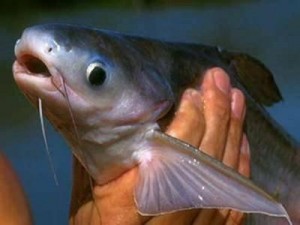
Industrially farmed in Vietnam along the Mekong River, BASA or Pangas or
whatever they’re calling it, has only been recently introduced to the French
market. However, in a very short amount of time, it has grown in popularity
in France. They are very, very affordable (cheap), are sold in filets with no
bones and they have a neutral flavor and texture; many would compare it to
cod and sole, only much cheaper. But as tasty as some people may find it,
there’s, in fact, something hugely unsavory about it. I hope the information
provided here will serve as very important information for you and your future
choices. Here’s why it is better left in the shops and not on your dinner
plates:
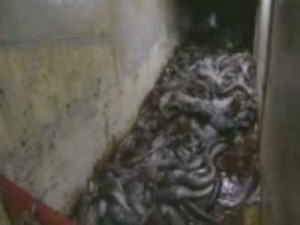
1. BASAS or Pangas are teeming with high levels of poisons and bacteria.
(industrial effluents, arsenic, and toxic and hazardous by-products of the
growing industrial sector, polychlorinated biphenyls (PCBs), DDT and its
metabolites (DDTs), metal contaminants, chlordane-related compounds
(CHLs), hexachlorocyclohexane isomers (HCHs), and hexachlorobenzene
(HCB) ).
The reason is that the Mekong River is one of the most polluted rivers on the
planet and this is where basa/pangas are farmed and industries along the
river dump chemicals and industrial waste directly into it. Avoid eating them
because they contain high amounts of contamination. Regardless of Reports
and recommendations against selling them, supermarkets still sell them,
knowing full well that they are contaminated.
2. They freeze Basa/Pangas in contaminated river water.
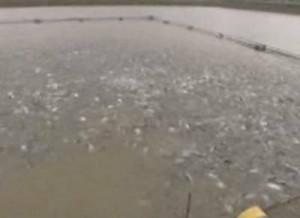
3. BASA/Pangas are raised in Vietnam .. Pangas are fed food that comes
from Peru ( more on that below ), their hormones ( which are injected into
the female Pangas ) come from China . ( More about that below ) and finally,
they are transported from Vietnam to other countries
4. There’s nothing natural about Basa/Pangas – They’re fed dead fish
remnants and bones, dried and ground into a flour (from South America),
manioc ( cassava ) and residue from soy and grains. This kind of nourishment
doesn’t even remotely resemble what they eat in nature. But what it does
resemble is the method of feeding mad cows ( cows were fed cows,
remember? ). What they feed basa/pangas is completely unregulated so
there are most likely other dangerous substances and hormones thrown into
the mix. The basa/pangas grow 4 times faster than in nature, so it makes
you wonder what exactly is in their food? Your guess is as good as mine.
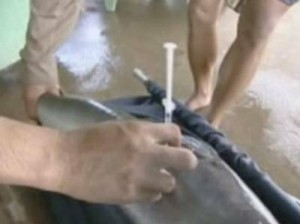
5. Basa/Pangas are injected with Hormones Derived from Urine. They inject
female Basa/Pangas with hormones made from the dehydrated urine of
pregnant women, the female Pangas grow much quicker and produce eggs
faster ( one Basa/Panga can lay approximately 500,000 eggs at one time ).
Essentially, they’re injecting fish with hormones ( they come all of the way
from a pharmaceutical company in China ) to speed up the process of growth
and reproduction. That isn’t good. And also consider the rest of the reasons
to NOT eat BASA.
6. You get what you pay for – and then some. Don’t be lured in by insanely
cheap price of Basa/Pangas. Is it worth risking your health and the health of
your family?
7. Buying Basa/Pangas supports unscrupulous, greedy corporations and food
conglomerates that don’t care about the health and well-being of human
beings. They are only concerned about selling as many basa/pangas as
possible to unsuspecting consumers. These corporations only care about
making more money at whatever cost to the public..
8. Basa/Pangas WILL make you sick – If you don’t get ill with vomiting,
diarrhea and effects from severe food poisoning, congratulations, you have
an iron stomach! But you’re still ingesting POISON not “Poisson”.
Final important note: Because of the prodigious amount of availability of
Basa/Pangas, be warned that they will certainly find their way into other
foods like imitation crab sticks, fish sticks, fish terrines, and probably in some
pet food too. Just check the Ingredient List to see if Basa is one of the
ingredients. Good Luck.
You have been warned !!!
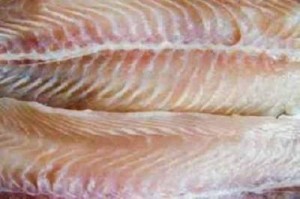
Why are we allowing this product to be imported?
